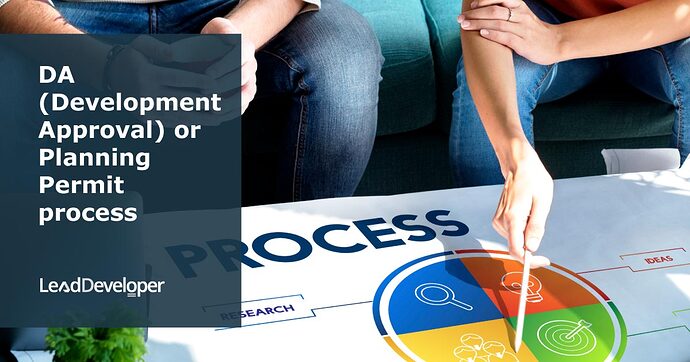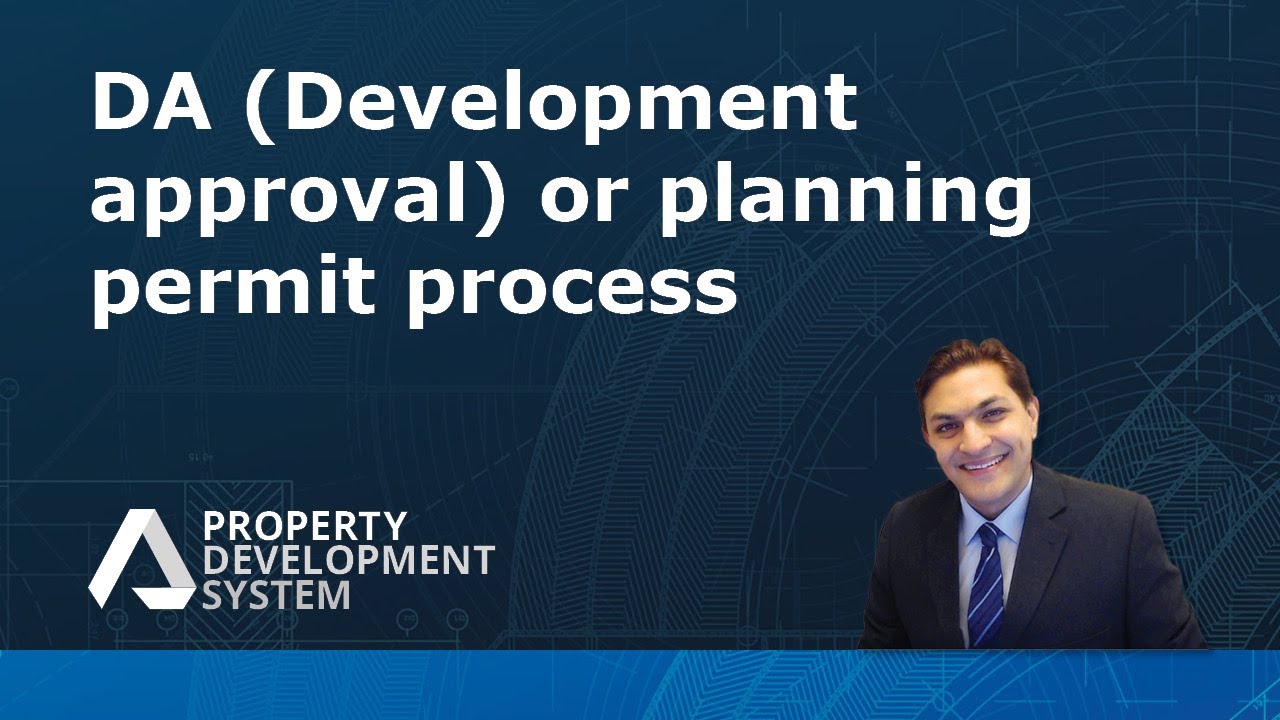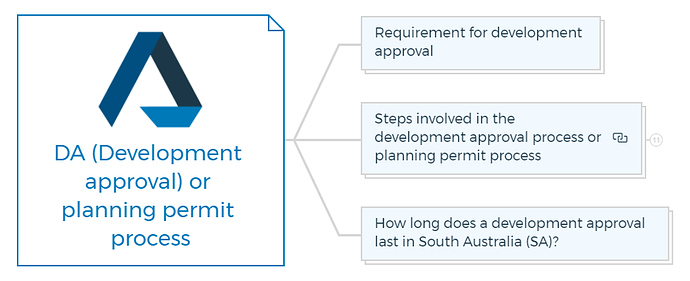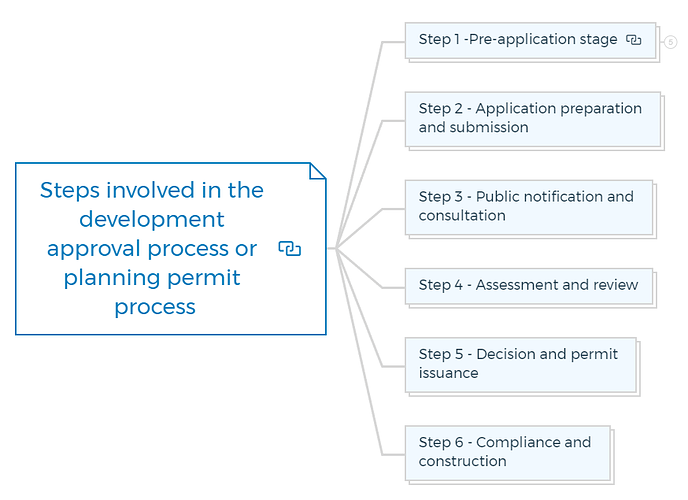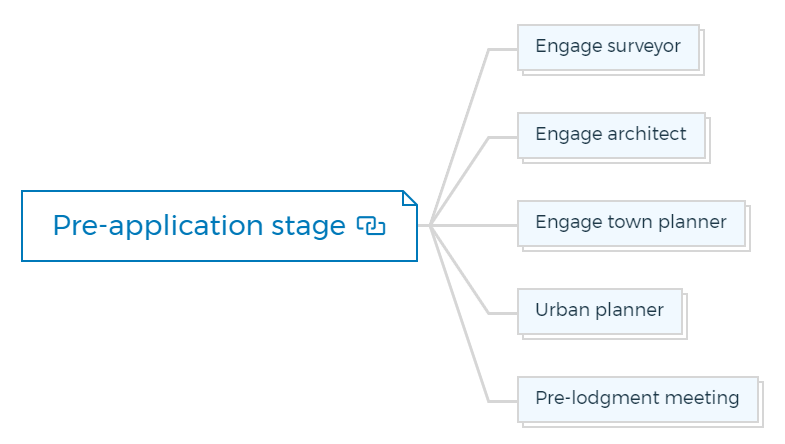DA (Development approval) or planning permit process
Embarking on a development project in Australia requires a thorough understanding and adherence to the development approval or planning permit process.
This development approval process involves engaging various professionals, including surveyors, architects, town planners, and urban planners, to ensure compliance with local regulations and secure the necessary permits.
Requirement for development approval
Most applications are made to the council for the planning permits, but some may be made to the minister for the planning.
We need to understand that a planning permit is not a building permit that relates to the construction method of a building or development.
However, you may need to obtain both.
While applying the development plan consent, you may be required to put up at least three copies of the following:
- Site plan
- Additional plans
- Description of the surrounding area
- Description of the proposed development
If we look at the general process, the permit process calls for the following basic steps.
Note that this may vary from property to property and the type of permission being obtained. As well as these are not fixed rules, the actual process can be affected by various influential factors, including the council (from state to state).
Steps involved in the development approval process or planning permit process
Step 1 -Pre-application stage
You research the suggested development at this level. This includes hiring surveyors, architects, and town planners to evaluate your proposal.
The local council or planning authority can help you comprehend the legislation, policies, and recommendations.
Before making an application, find out about the planning scheme and the rules that may affect the allotment of the planning permit/development approval.
For further instance, below-mentioned are some of the examples of the professional guidance you may require:
Engage Surveyor
- Feature Survey
- Contour Survey
A surveyor features the survey (re-establishment or contour survey) and tells you precisely whether the site or the property sits in relation to streets, geographical zoning layouts, and demographics.
This helps the architect to know exactly what the site’s dimensions are.
Learn More
Engage architect
- Talk to a builder, get their feedback on the design, and identify/explore economical construction alternatives.
Engage town planner
- It is usually for larger projects.
- To deal with objections
- If the council opposes the development, then an expert town planner who understands the codes and restrictions of the council can find a solution keeping in mind all the complexities.
Urban planner
- Required for huge projects (if only).
Pre-lodgment meeting
- Obtain the council’s feedback
- Get general advice or caution
Learn More
Step 2 - Application preparation and submission
Prepare and submit the application. Collect all the required information by consulting an expert and filling up the application form.
Preparing the development application follows project feasibility. Gathering all local council or planning authority-required paperwork, plans, and reports.
Architectural drawings, site plans, environmental impact studies, engineering reports, and other project-specific documents are common.
The local council or planning authority receives your completed application. This stage requires application costs.
The council will then evaluate your application, technical evaluations, compliance with planning requirements, environmental considerations, and community impact.
You are missing out if you haven’t yet subscribed to our YouTube channel.
Step 3 - Public notification and consultation
The next step calls for some patience. The application is advertised for somewhere between 14 to 21 days so that the responsible authorities can cater for any objections made during that period.
Public notification and consultation may be required for certain developments, especially those with a significant community impact.
The public can comment, voice concerns, or support the proposal. The local council or planning authority will review this feedback.
The neighbours are usually informed via a letter on a sign on sight.
Step 4 - Assessment and review
The council or the other authorities assess the application by considering the following steps:
- Consider any objections
- Hold mediation meetings if needed
- Consider any referral comments
- Assess planning scheme provisions
- Negotiate with the permit applicant
- Prepare report
Step 5 - Decision and permit issuance
The council concludes and decides the issue, whether or not to approve the permit.
A council is entitled to issue the permit with conditions, a notice of decisions with a specific condition, or even a refusal (based on the inspection and the application complications).
A permit can be granted with or without conditions, and a proposal can only go ahead if all the conditions are met. For example, a permit or development approval for a restaurant might be issued on the condition that a certain number of car-parking spaces are provided.
The applicant and all the objectors (if there were objectors) are informed of the council’s decision via a Notice of Decision or a Notice of Refusal. The notice will outline the next steps you can take.
There are opportunities to apply to VCAT (Victoria Civil and Administrative Tribunal) for a review, such as if a permit condition is unacceptable or if the council fails to decide in time.
Step 6 - Compliance and construction
After obtaining the planning permit, you must ensure compliance with all the conditions specified in the permit.
This includes obtaining any additional permits or approvals required (e.g., building permits), adhering to specific design and construction guidelines, and fulfilling any environmental or community engagement obligations.
Regular inspections by relevant authorities may be conducted during the construction phase to ensure compliance.
How long does a development approval last in South Australia (SA)?
Development approvals, commonly known as planning consents, in South Australia (SA) vary in duration based on the circumstances and restrictions. SA development approvals last five years.
The five-year validity term does not mean building or development must be finished in that time. It means the duration of approved plans and conditions.
If construction has not commenced within the five-year timeframe, an application for an extension of time may be required to maintain the validity of the approval.
Suppose planning policies, zoning regulations, or development controls change significantly during the validity period of the approval. In that case, it may be affected and require further assessment or modifications to comply with the updated requirements.
The planning permit or development permission document may contain specific development requirements. In South Australia, the local council or planning authority can provide details on development approval duration and conditions.
Test Your Knowledge
Development Approval (DA) Process Practical Exercise
Overview:
This assignment is designed to give students a comprehensive understanding of the Development Approval (DA) or planning permit process in Australia. Through a series of questions, tasks, and research inquiries, students will explore the complexities of securing necessary permits for development projects, engaging with local regulations, and understanding the roles of various professionals in the process.
Objectives:
- Understand the DA process, including the distinction between planning and building permits.
- Recognize the steps involved in obtaining a development approval.
- Identify the roles of professionals such as surveyors, architects, town planners, and urban planners in the DA process.
- Analyze the impact of local regulations and community feedback on development projects.
Instructions:
Complete the following tasks based on the DA process described. Include references to specific sections of the article to support your answers where applicable.
Tasks and Questions:
Task 1: Research and Explanation
- Q1: What is the difference between a planning permit and a building permit? Why might a development project require both?
- Q2: Describe the role of a surveyor in the pre-application stage of the DA process. How does this role contribute to the architect’s work?
Task 2: Case Study Analysis
- To Do: Choose a hypothetical development project (e.g., residential complex, commercial building, community park). Outline the steps you would take from the pre-application stage to permit issuance, referencing the steps mentioned in the article.
Task 3: Role of Professionals
- Q3: Explain the significance of engaging an urban planner for large projects. How does their expertise differ from that of a town planner?
- Q4: Discuss the importance of public notification and consultation in the DA process. How can this step influence the outcome of a development proposal?
Task 4: Real-World Application
- To Do: Research a real-life example of a development project in your local area or in Australia. Summarise the project and identify any challenges faced during the DA process, such as community opposition or changes in planning policies.
Task 5: Reflection and Critical Thinking
- Q5: Reflect on how changes in planning policies or zoning regulations during the validity period of a development approval could affect a project. Provide an example of how a developer might navigate these challenges.
- Q6: Consider the role of VCAT in the DA process. Why is it important for developers and the community to have access to a tribunal for reviewing council decisions?
Research Questions:
- RQ1: Investigate the duration and conditions of development approvals in a state or territory of Australia other than South Australia. Compare and contrast the findings with the information provided for South Australia.
- RQ2: Explore the impact of environmental impact studies on the DA process. How do these studies influence the decision-making of local councils or planning authorities?
Submission Requirements:
- Complete all tasks and answer all questions in a Word document or PDF.
- Include a title page with your name, date, and assignment title.
- Submit your assignment via mail or by comment.
